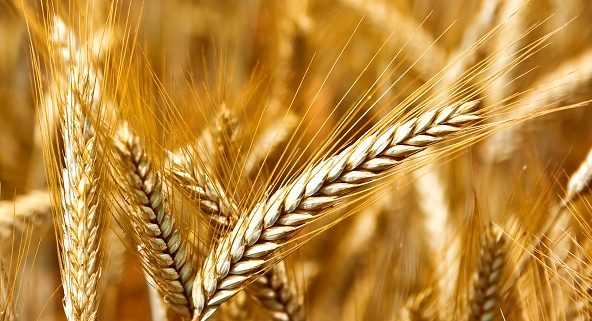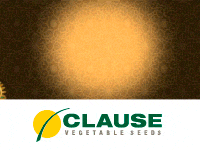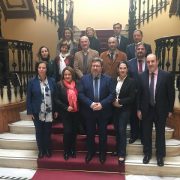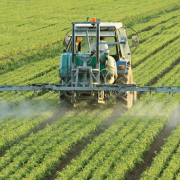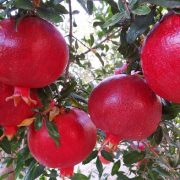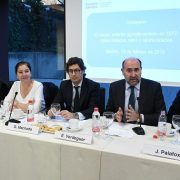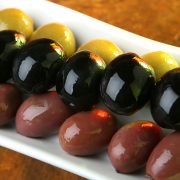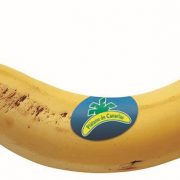Spain: the deadline for submitting applications for direct aid from the CAP is opened
From February 1st to April 30th, the deadline for the presentation of the single application for direct aid from the PAC is opened. A campaign in which 745,000 producers will be able to apply for such aid, the total amount of which will amount to 4,940 million euros, which can be paid in the form of advances as of October 16th and the balance as of December 1. In the same period, requests for payment of the rural development measures included in the scope of the integrated management and control system and the request for access to the National Reserve of the Basic Payment System may also be submitted.
By means of the Unique Application, the producer can request all his aids of a single time. It is important to remember the importance of completing the application correctly and presenting it in time, in order to avoid possible penalties or even the non-payment of the aid for a bad declaration or a late presentation.
As in previous campaigns, the Single Application should be addressed to the competent authority of the autonomous community in which the exploitation or most of the surface of the same is located and if there is no surface, it will be presented in the autonomous community where the greatest number of animals is found.
The direct aids that can be requested are included in the Royal Decree approved at the end of 2014 on the application as of that year of direct payments to agriculture and livestock, modified last on January 26th, 2018. In these the rules describe the necessary requirements to qualify for each aid and the minimum information that the Single Application must contain. The aids that can be requested in 2018 are the following:
1. Community aid schemes.
– Basic payment to farmers (“basic payment scheme”);
– Payment for farmers who apply agricultural practices that are beneficial to the climate and the environment (“green payment”);
– Supplementary payment for young farmers who start their agricultural activity.
– Payment of the scheme for small farmers
2. Specific aid schemes by area:
– Specific payment for cotton cultivation.
3. Voluntary associated assistance schemes, pursuant to Article 52 of Regulation (EU) 1307/2013.
– Help associated with rice cultivation
– Help associated with protein crops
– Help associated with nuts and carob beans
– Help associated with quality legumes
– Help associated with sugar beet
– Help associated with tomato for industry
– Associated support for farms that maintain nurse cows
– Associated help for cattle holdings of bait.
– Associated support for dairy farms.
– Associated support for sheep farms.
– Associated support for goat farms.
– Associated aid for dairy cattle farmers who maintained special rights in 2014 and do not have eligible hectares for the activation of basic payment rights.
– Associated aid for cattle graziers who maintained special rights in 2014 and do not have eligible hectares for the activation of basic payment rights.
– Associated aid for sheep and goat farmers who maintained special rights in 2014 and do not have eligible hectares for the activation of basic payment rights.
Requests for payment of rural development measures
Also on February 1st, the deadline for submission of applications for payment of rural development measures included in the scope of the integrated management and control system (basically area aid and livestock aids), the request for transfer of rights of basic payment and the application of rights for the National Reserve of Basic Payment, which is oriented mainly towards young farmers and towards those producers who join the agrarian activity and who have adequate training in the agricultural field.
Regarding the assignments of basic payment rights, in this campaign the deadline for submitting them has been extended until May 31st
Also, those holders who belong to the scheme of small farmers to receive less than € 1,250, must submit their ratification of participation in the scheme, and based on it will only be required, in order to collect the aid, to maintain at least the same number of admissible hectares as the number of basic payment rights assigned to them, as well as the carrying out of the agricultural activity in the farm that they declare in their Unique Application. They may also submit their waiver request if they wish to change to the general regime.
SIGPAC
To facilitate the completion of the Single Application and taking into account that this year all grant applicants must submit the so-called “graphic statement”, in accordance with the Geographical Information System of Identification of Agricultural Plots (SIGPAC), of all plots of the farm, the Ministry of Agriculture and Fisheries, Food and Environment puts the necessary information at the disposal of applicants by accessing the SIGPAC through its website (www.mapama.es), on the FEGA website ( www.fega.es) or of the autonomous communities.
In the event that the SIGPAC does not reflect the real situation of the plots and if it is observed that the enclosures are not correctly delimited, or if the use of any enclosure has been changed, the producer will notify the Administration through the opportune allegation.
An enclosure whose delimitation, or other information registered in the SIGPAC is not true and coincident with reality, may result in a reduction of the aid requested, especially if it includes elements that are not eligible
Main regulatory changes
As indicated by the Ministry when the Royal Decrees that modify the current regulations for direct aids as of the 2018 campaign were published on November 11th and January 26th, the new law is incorporated into our legal system. Regulation of the European Union corresponding to the mid-term review of the basic acts of the Common Agricultural Policy (CAP) for the period 2014-2020, known as the Omnibus Regulation. In addition, various technical adjustments are introduced that improve the application and efficiency in the management of direct payments according to the experience acquired at national and European level.
The most notable modifications introduced are the following:
· To encourage participation in the aid of young farmers, the value of supplementary aid to young farmers is doubled to 50% (up to now it was 25%) of the average value of the young person’s basic payment rights.
· The criteria for determining a pasture surface are relaxed, extending the spectrum of eligible pastures to all those trees and shrubs that can actually graze, although herbage forage is not a majority in these areas. However, this does not mean that the corresponding grazing admissibility coefficient is applied to these areas, in order to discount areas of impenetrable vegetation, rocky outcrops or other unproductive elements scattered throughout the pasture or, if necessary, high slopes. .
· With regard to the payment for agricultural practices beneficial to the climate and the environment, the prohibition of the use of plant protection products on the areas of ecological interest (SIE) when they count as SIE is incorporated, in accordance with the provisions of the new European regulations. The parcels that are declared as SIE must be marked in a specific way in the Single Application. On the other hand, flexibilization elements are also incorporated in this measure, emphasizing that SIE fallows should not be used for agricultural production for 6 months instead of the 9 months required in previous campaigns. They may also compute as SIE the meliferous fallows (that is, those fallows with a high presence of honey species) and the surfaces of eulalia (Miscanthus) and silfo (Silphium perfoliatum).
· The control of the agricultural activity that must be carried out annually in all the plots of the farm for which assistance is requested is reinforced and the figure of the active farmer remains unchanged, despite the fact that the Omnibus Regulation allowed for its flexibility, with the In order to maintain the orientation of the aid towards farmers and ranchers with a real agrarian activity.
· It is mandatory, as of 2018, the presentation of a graphic declaration of the surfaces for all farms. The common use areas (communal pastures, sharecropping, etc.) are excepted from this obligation.
· The cession of toll-free basic land-free payment rights is extended to cases in which a young farmer is involved.
· The conditions required in the changes of ownership of the livestock farms are also relaxed, when the new holder is a young farmer, to be able to receive the aid associated with the farmers, in coherence with the general strategy of the CAP in search of a boost and support to the generational change in the field.
· Minimum requirements are established in the application of manures and slurry, to reinforce the commitment of agriculture and livestock to the environment.
All the changes in the regulations will be applied already in the 2018 campaign, seeking to improve the CAP’s commitment to the environment and sustainability and favor the generational changeover
Source: MAPAMA




